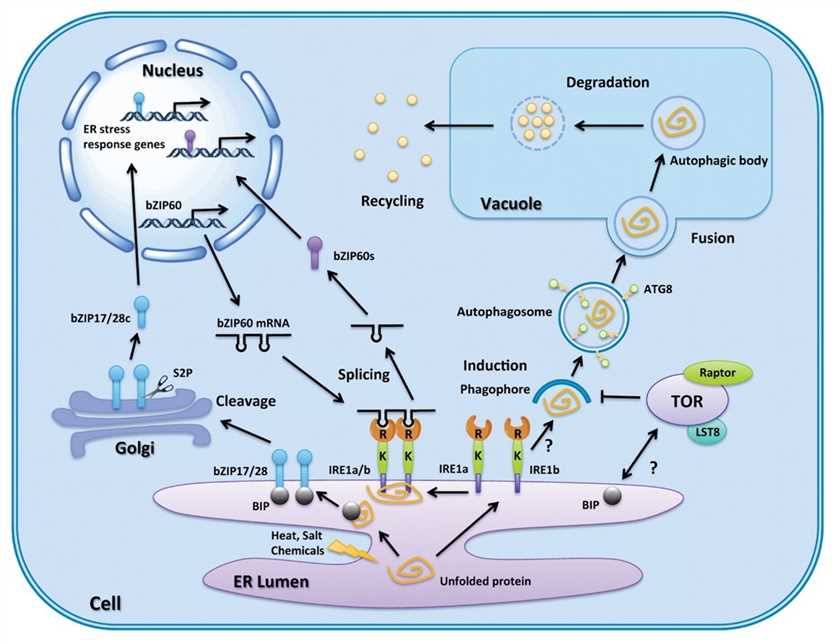Autophagy functions as a degradation process in the recycling of cellular cytoplasmic contents and the removal of damaged proteins or organelles under unfavorable growth conditions. Since many proteins in endoplasmic reticulum (ER) are membrane proteins, the bulk of multiple protein molecules gathered together cannot be reversed and transported to the cytoplasm for degradation by the proteasome. Therefore, these proteins are generally degraded by the autophagy pathway that can regulate protein stability.
Lifeasible is a leading provider of comprehensive, high-quality services for plant science. Our platform is equipped with state-of-the-art facilities and highly experienced staff in order to assist in areas of autophagy of endoplasmic reticulum quality control. We guarantee credible results for our customers all over the world.
 Fig.1. Autophagy and ER stress regulation pathways in plants. (Pu Y and Bassham DC., 2013)
Fig.1. Autophagy and ER stress regulation pathways in plants. (Pu Y and Bassham DC., 2013)
Lifeasible provides fast turnaround, high-quality services at competitive prices for customers worldwide. Our advanced technical platforms can help our clients solve the problems they may encounter in research based on years of experience. If you are interested in our services or have any questions, please feel free to contact us or make an online inquiry.
Reference
Lifeasible has established a one-stop service platform for plants. In addition to obtaining customized solutions for plant genetic engineering, customers can also conduct follow-up analysis and research on plants through our analysis platform. The analytical services we provide include but are not limited to the following:
Get Latest Lifeasible News and Updates Directly to Your Inbox
Adaptive Evolutionary Mechanism of Plants
February 28, 2025
Unraveling Cotton Development: Insights from Multi-Omics Studies
February 27, 2025